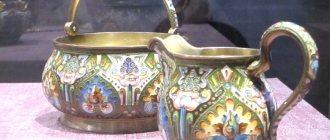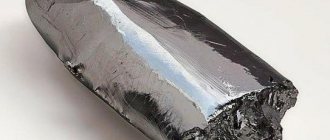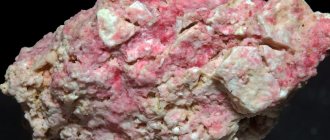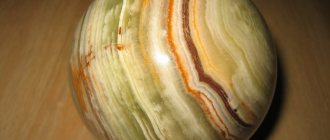Ceramic products are the oldest type of craft of all skills mastered by man. Even primitive people made primitive dishes for personal use, hunting decoys, and even clay utensils like mud-oven stoves for cooking.
Of course, in those days people had no desire for creativity or art, and any craft was considered only as another auxiliary means for survival. However, later man learned to find beauty in any type of work.
The article tells about the history of porcelain, its types and method of production, as well as the distribution of this material and its path in the artistic creativity of various peoples.
Porcelain
Works of art made from porcelain are rightfully considered the pinnacle of ceramic products, as well as the most difficult group of products in pottery production, since processing porcelain is not the easiest task, and only the skill of a glassblower can compare with it in terms of danger and complexity.
Porcelain as a type of ceramic is considered the most noble material. Unlike most other materials, it has many subtypes, each of which has special processing conditions.
Description
In the classic version, it is a translucent material, thin glazed ceramics. Its characteristic features:
- white color with a blue tint;
- high strength - it will not be possible to scratch the product with a sharp object;
- low porosity;
- resistance to chemical and temperature influences;
- natural beauty.
Types of porcelain
They directly depend on the consistency, as well as on the proportion of the ratio of the porcelain mass itself and the glaze in its base. Based on these indicators, three types of this material are distinguished in the composition of porcelain:
- Solid. It contains only two materials: kaolin and feldspar. It is to feldspar that porcelain owes its refractoriness and elasticity of structure. Solid material is not used in ceramic production in its pure form. Usually quartz and sand are added to it for strengthening. Musical instruments are made from it, as well as souvenir bells, because thanks to its solid semi-metallic structure, the material is capable of producing high, clear sounds. The first to produce hard porcelain was the German chemist and glassblower Johann Friedrich Bettger.
- Soft. It is from this material that most of the works of art known to us are created. Thanks to its soft structure, the material is easy to process and quickly takes on any given shape, instantly freezing in the adopted position. The material owes this structure to the silicon, saltpeter, soda, and alabaster in its composition. Soft porcelain was invented at the end of the 16th century in Italy, and was immediately directed into the mainstream of art, giving birth to most of the ceramic luxury items known to us.
- Bone. This material is, in fact, a mixture of waste of the first two types. It is made quite simply by mixing waste and adding a small amount of feldspar to it, which results in a brittle material. For a long time, cheap dishes and household items were made from bone china. This material has never been used in the field of art due to its dirty yellowish color and excessive fragility. Bone china was discovered in 1748 by the Dutch chemist Thomas Frey.
What is the material
Porcelain is a subtype of ceramic material that is obtained by mixing:
- kaolin;
- quartz;
- feldspar;
- burnt bone;
- special types of clay (in different proportions).
The resulting white and plastic mixture is fired at a temperature of +1,400°C. Quite often, one firing is not enough, so the craftsmen subject the porcelain to another treatment.
The finished material becomes impenetrable to water and air, but a thin porcelain layer is capable of transmitting light. If you lightly hit a piece of such ceramics with a wooden stick, you can hear a high and clear sound, which is somewhat similar to the sound of hitting a crystal glass.
Porcelain production
This is a long process that requires a lot of and painstaking preparation. Mixing the ingredients, weighing the raw materials and shaping the product takes a lot of time, while the result of this work is achieved by almost instantaneous firing in an oven at high temperature.
When preparing raw materials for mixing in special forms, the components are thoroughly cleaned from secondary impurities. The lower the percentage of impurities, the higher the quality of the porcelain. The raw materials are carefully sifted on production sieves, dried in a hot air stream and mixed with water, stirring with a special device until the consistency of thick jelly.
The resulting mass is stirred for a long time to make it homogeneous and poured into pre-prepared molds, which are placed in kilns.
After firing, the resulting works are sanded with a wet cloth, polished, painted and packaged.
Porcelain in the East
Hard porcelain was invented in China at the beginning of the 6th century. Chinese porcelain, whose history goes back almost a millennium and a half, was for a long time produced only in the emperor’s personal factories, in an atmosphere of the strictest secrecy.
Needless to say, ordinary Chinese at that time did not have access to porcelain products. In the 7th century, its production began to develop rapidly. For a long time, Chinese chemists experimented with the nature, consistency and color of the new material, and by the beginning of the 15th century, Chinese porcelain production was reaching its heyday. It was Chinese craftsmen who were the first in the world to master the technology of painting hot surfaces with paints made from compounds of cobalt, hematite, and chromium, which introduced Chinese porcelain into history as one of the highest quality in the world.
A century later, Portuguese sailors brought the secret of ceramics production to Europe, but at first the new craft did not take root.
In the middle of the 16th century, porcelain began to be mass produced in Japan. The quality of the Japanese counterpart was not as high as the works from the Middle Kingdom. However, craftsmen quickly mastered the technology for producing various complex shapes. Also, the Japanese were the first to come up with the idea of decorating porcelain products with the thinnest sheets of gold.
Molding
Porcelain production technology is a complex multi-stage process. This largely explains the high cost of products. For molding blanks, molds made of gypsum or PVC are used.
Molding is carried out semi-automatically or automatically. To roll out a layer of uniform thickness, a special roller and a rotating mold are used.
Things of complex shape, having decorative and artistic value and complex configuration, are made by casting. For blanks, plaster or split molds are used.
Porcelain in Italy
The history of the creation of porcelain in Italy is also interesting. The fact is that at first all porcelain products that appeared in Europe were exclusively imported. Since luxury goods were supplied in rather limited quantities, those rare items that did not end up in the treasuries of various monarchs ended up in vaults belonging to various abbeys.
At first, medieval European masters tried to copy the composition of the new material. However, all attempts were unsuccessful. The porcelain either burst almost immediately after casting the product, or did not want to turn into a thick jelly-like consistency.
Those rare examples of experimental European porcelain that have survived to this day are in the Vatican, in the treasury of the Pope.
Italian craftsmen achieved great success when they managed to establish a small porcelain production at the end of the 15th century. However, it soon became clear that the products they produced were not made of porcelain at all, but of very thin polished clay.
Various written sources, as well as records of artisans of those times, do not contain more accurate information either about porcelain or about its export to Europe until the very end of the 16th century.
In 1575, the legendary Duke Francesco de' Medici opened the first factory in Europe for the production of artistic porcelain in his villa. Resourceful Italians decided to produce it of the highest quality, without wasting time on producing a trial series of products of medium and low quality. The risk paid off. Porcelain obtained by the Medici became a unique white material. It consisted of white clay from Vicenza, as well as gray quartz. At the Count’s insistence, only white glaze was also used, which gave the finished product a matte whitish tint.
Since the production was quite small, only about fifty artifacts have survived to this day - thin table dishes, large vases, trays, as well as about seven field flasks for drinking water.
All these works of art were carefully painted by the best artists in Italy, who depicted floral patterns and various still lifes on them, which was quite a fashionable trend at that time.
Differences from ceramics
Porcelain is a type of ceramic. A more complex composition and manufacturing technology determine its properties and appearance, distinguishing it from simple ceramic products.
The main differences are as follows:
- Porcelain products are thin and light, the edge of the shard is absolutely uniform. In ceramics, porosity is noticeable on the chip; the walls are much thicker.
- The whiteness of porcelain does not fade, dirt is not absorbed into the pores, and the design does not crack. Ceramics ages quickly, absorbs odors, and becomes covered with a fine network of cracks.
- Porcelain is translucent, but light does not pass through ceramic products.
- A light blow with a fingernail or a thin wooden stick makes porcelain objects ring, and ceramics respond with a dull sound.
Despite their fragility and lightness, porcelain products last a long time without losing their beauty and brightness. Time leaves no traces on them.
Porcelain in Germany
The history of the creation of porcelain in Germany is not so romantic. From Italy, with the assistance of Venetian merchants, the material reaches Germany, where leading manufacturers of ceramic products immediately show interest in it.
The city of Meissen in West Germany was at that time leading in the field of pottery. And it was here, under the leadership of Count Ehrenfield von Tschirnhaus, that experiments began to identify and improve the properties of porcelain, as well as experiments to create new compositions. The count was interested in creating a manufactory that would provide the country with export raw materials and would make a significant contribution to the German economy. Experiments in glass blowing have already been carried out successfully under the supervision of Tschirnhaus. However, the count understood that the glass-melting industry had not yet become so popular that it could be relied upon.
But this is where the Kahla brand was born. The history of porcelain has its roots in the history of the legendary chemist Berger, who signed all his works in this way.
In 1704, under the responsibility of Tschirnhaus, the legendary twenty-year-old pyrotechnician Berger, whose experiments were considered too dangerous not only for the citizens of the country, but also for the royal power, was released from the royal prison. After all, Berger was actively involved in the creation of bombs and land mines with increased power.
Tschirnhaus offers Berger a job in a full-fledged laboratory in exchange for help and collaboration on the soft porcelain problem. Six months later, Berger realizes that hard porcelain differs from soft porcelain only in the amount of quartz dust it contains. Thus began the story of Kahla porcelain.
By the end of the 18th century, almost all species known to us were discovered, and mass production of products of various qualities was established. Basically, these were stylishly decorated dishes and various decorative figurines, which were eagerly purchased by wealthy collectors to decorate houses and country villas.
painting
There are two types of painting: underglaze and overglaze.
When underglaze painting, paint is first applied to the product, and then the painted layer is covered with glaze. The glaze is transparent, gives an elegant shine to products, protects against microcracks, ultraviolet radiation, and exposure to alkalis. Such dishes can be washed many times without compromising quality.
The overglaze technique is performed in the reverse order: first, the product is covered with glaze, and then paint is applied to it. The colors are bright and saturated, but fade and fade over time.
For mass-produced sets and accessories, designs are applied using the decal technique. First, the design is printed on special paper, then it is pasted onto a cup, tureen, plate and fired. The paper burns, and the paints are imprinted on the surface of the dishes.
Premium porcelain products are piece goods; craftsmen paint them by hand and decorate them with gold and silver. The cost of the work is high, but the results are real works of art.
In Russia
The history of Russian porcelain is also full of interesting facts and entertaining details. In our country, its production did not immediately take root, because for many years the country had its own “folk” material - majolica. By the end of the 18th century, its production in Russia was so large-scale that at international shows and exhibitions the Russian product was in no way inferior to global competitors.
In 1724, the first factory for the production of majolica was founded, where, under the leadership of the merchant-enthusiast A.K. Grebenshchikov, the production of artistic majolica began. It was with her that the history of porcelain in Russia began.
Majolica was distinguished by its subtlety and grace, and painting on the surface was always done in traditional Russian styles, such as Gzhel, Khokhloma, Palekh. Such works of art were incredibly valued in Italy, France, Germany and Spain.
In addition to majolica, Grebenshchikov’s plant also produced ordinary pottery on an industrial scale, which was painted by Gzhel craftsmen. The Gzhel technique was initially famous for its rough but bright strokes, merging into one image. Hand painting was not cheap at that time, but even pottery was sold out of the factory in a matter of days. Enameled cups with floral patterns were popular throughout the central part of the Russian Empire, linking the history of the country with the porcelain era.
For a long time, domestic scientists could not determine the composition of porcelain. The history of porcelain in Russia almost ceased to exist. It is known that even during the reign of Peter I, a special expedition was sent to Germany, the purpose of which was to find out the composition. However, the expedition failed, failing the mission. Later, one of its leaders, Yuri Kologrivy, would still be able to obtain porcelain experimentally in his laboratory in St. Petersburg.
In 1724, Grebenshchikov abandoned his experiments with porcelain and switched to earthenware, a more accessible and cheaper material to process. In just two years, the merchant managed to achieve industrial production, as well as gain a reputation as one of the highest quality manufacturers of earthenware and other household and artistic products. Tea sets became widespread, becoming an indispensable attribute of every self-respecting family of that time.
Kuznetsov porcelain, whose history is truly interesting, owes its appearance to the work of the domestic chemist Dmitry Ivanovich Vinogradov, a friend and associate of Mikhail Vasilyevich Lomonosov himself.
January 30, 1746 will go down in history as the day of Russian porcelain. It was on this day that Dmitry Vinogradov managed to obtain the first experimental composition in his laboratory. The history of the emergence of porcelain in Russia began when the first bowls from this material were cast at the plant of Pyotr Afanasyevich Kuznetsov.
The production of porcelain was continued by a descendant of Pyotr Afanasyevich, Mikhail Sergeevich Kuznetsov. He became the first Russian monopolist in the production of porcelain and earthenware products. In addition to household items, the Kuznetsovskaya manufactory became famous for its incredibly beautiful artistic products and luxury items.
The decline of Russian porcelain occurred at the end of the 19th century, when, instead of the conceptual embodiment of ideas, manufacturers focused on the complexity of forms, producing absolutely meaningless vases, teapots or sets with muddy watercolor patterns. High-quality engravings disappeared from the products, giving way to tasteless landscapes.
In the Art Nouveau era, the history of porcelain in Russia finally ceases to exist. The handmade work of famous craftsmen is being replaced by standard factory casting with identical stenciled images of sunsets and sunrises.
History of Soviet porcelain
After the revolution, when the Soviet government desperately grabbed every opportunity for propaganda, turning all spheres of art available to it into means of mass propaganda, Russian porcelain was not forgotten. Moreover, he became one of the main, reliable and long-term executors of orders for state propaganda. The porcelain factory in St. Petersburg was closed for reorganization in 1917, and in 1919 it began producing a new type of product.
In just two years, the plant assembled a team of the best craftsmen in their field. Writers and artists, masters of casting, painting and gold ligature were involved.
The first experimental batch consisted of propaganda figures of workers and armed sailors with red banners. These ceramic soldiers immediately became the subject of admiration for boys and created a boom among buyers and collectors. Each of these soldiers bore a factory mark, and hundreds of people became interested in the history of porcelain marks.
The next batch included household and household items decorated with the symbols of the new government.
In subsequent years, the production of propaganda porcelain only gained momentum. Gradually, factories began to produce children's toys, kitchen utensils, collectible busts of famous revolutionary figures, and Christmas tree decorations.
Soviet porcelain is becoming closer to the people, producing items that are both needed by the population and, at the same time, ideologically correct from the point of view of the authorities.
The history of porcelain in the USSR is short. It ended in the mid-1980s, when the population no longer needed ideological products. Since all the factories were set up to produce only ideological products, production had to be curtailed, since it was not possible to find experienced graphic designers at that time.
Drying
When the future cup, vase, teapot, plate is formed, they need to be dried. The initial moisture content of the raw material is 22-24%, and after drying the figure is reduced to 2-4%. This is necessary to obtain durable products, without internal cracks and deformation.
Drying consists of two stages:
- Preliminary - the blanks are dried in molds to 15-16% humidity, after which they are removed from the molds.
- Final - the blanks are dried without molds to 2-4% humidity.
Processing is carried out in special dryers, which significantly speeds up the process. Dried kaolin products are cleaned from seams, dirt and dust are removed and sent for firing.
Russian porcelain in our time
Despite the sharp decline in the popularity of porcelain products and the almost extinct production, it still remained a folk craft and continued to appear on store shelves. Only now it was done using a makeshift method. Of course, the quality of such products left much to be desired, but this did not affect demand. The population is accustomed to simple Soviet toys made of cheap porcelain. Therefore, handicraft analogues were quite popular, especially since many manufacturers were fired workers from factories and were well versed in the technique of creating works of art from porcelain and earthenware.
In 1994, the plant named after Mikhail Vasilyevich Lomonosov was re-opened in St. Petersburg. In 1995, he released an experimental batch of New Year's toys. Painting artists from all over the country were involved in the restoration of the plant.
The history of Soviet porcelain was continued by descendants who returned to the origins of the appearance of this amazing art on Russian soil. A few years later, the plant began not only to re-release previously cast figures, but also to develop its own designs, as well as models of new works of art. Since 1998, the regularity of release of new collections of the plant can be the envy of the best manufacturers around the world. The quality of Russian products is again becoming a benchmark, winning first places not only at art exhibitions, but also in the sales market for such products.
In 2008, the plant received a grant from Russian President Vladimir Vladimirovich Putin, as well as funds to update equipment.
Modern handicraft porcelain still exists and is a fairly large folk craft. On the territory of Russia there are even entire villages of breeders who create unique works of art using the original Russian techniques of porcelain making and painting.
In the village of Dulevo, Samara Region, craftsman Pyotr Vasilyevich Leonov has been working for many years, working in a unique technique of brushstroke painting. He paints hot porcelain with his fingers, rubbing the paint into the still warm work with strokes. Despite the apparent roughness of his movements, the works of Peter Leonov are incredibly valued all over the world.
“The history of cold porcelain has long outlived its usefulness,” the artist believes, explaining to journalists that “his soul lies in the warmth of porcelain, and one cannot be cold with it.”
Revival of porcelain popularity
Recently, against the backdrop of the growing popularity of the almost forgotten art of working with porcelain in the country, more and more children are interested in this craft. Porcelain and earthenware painting schools have been opened in many Russian cities. There, students learn a lot of interesting things. They are not only told about the history of porcelain production, but also taught how to paint the material using various techniques.
Modern trends in the revival of crafts are key to the revival of Russian culture and customs, which is an incredibly important part of the public worldview.
The history of porcelain and marks can be of interest not only to adults, but also to children. In 2008, the Azbuka publishing house released a series of educational books about Russian crafts. The series was a huge success and was reprinted several times. According to many critics, it is difficult to find a book that would present this kind of material for children in a more accessible way.
Of course, the publication of “The History of Porcelain for Children” is just a small part of it, but other crafts are also becoming popular among young people, which indicates a revival of traditional Russian art.











